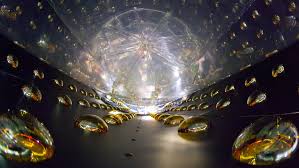
The Most Bizarre Science Experiments of the Decade
Science is often seen as serious and precise, but over the past decade, researchers have pushed boundaries in ways that are downright bizarre—blurring the lines between genius, curiosity, and downright weirdness. From creating glow-in-the-dark animals to experimenting with virtual reality in space, these oddball experiments have captivated minds and sparked new discoveries.
Let’s dive into some of the most unusual science experiments that defined the last ten years.
🧪 Glowing Animals: Lighting Up Biology
Scientists genetically engineered animals—like mice, fish, and even rabbits—to glow in the dark by inserting jellyfish genes that produce fluorescent proteins.
Why? Beyond the wow factor, these glowing creatures help researchers track diseases, observe biological processes in real time, and accelerate drug development.
Though it sounds like sci-fi, glowing animals are a real tool for breakthroughs in medicine and genetics.
🌌 Virtual Reality in Space
NASA teamed up with scientists to use virtual reality (VR) experiments aboard the International Space Station. Astronauts used VR to simulate Earth environments, reducing stress and cognitive decline in microgravity.
This bizarre experiment helps us understand how humans adapt mentally to long-duration space missions—and may one day aid colonists on Mars.
🧠 Mind-Controlled Machines
Brain-computer interfaces advanced drastically in the past decade, allowing people to control robotic limbs or computers using just their thoughts.
One striking experiment involved paralyzed patients moving robotic arms or even typing messages with their minds, reshaping possibilities for disability treatments.
While this sounds futuristic, these mind-controlled devices are helping redefine independence for many.
🐜 Ant Colonies as Living Robots
Researchers programmed real ant colonies to perform complex tasks by manipulating pheromone trails and environmental cues.
These living robots can inspire new approaches to swarm robotics and collective problem-solving, blending biology with technology in strange but promising ways.
🧬 Creating Synthetic Life Forms
Synthetic biology experiments pushed boundaries by designing microorganisms with entirely synthetic DNA.
One team created bacteria with rewritten genetic codes, opening pathways to new medicines, biofuels, and environmental solutions—but also raising ethical questions about creating life in the lab.
🌿 Plants That Communicate
Scientists discovered that plants can “talk” to each other through underground fungal networks, sharing nutrients and warnings about pests.
Some bizarre experiments even tested how plants respond to music or human touch—challenging our understanding of plant intelligence and interaction.
🤖 Robots with “Feelings”
AI researchers built robots equipped with sensors to simulate emotions like pain or pleasure, exploring how machines could develop empathy or social intelligence.
These experiments, though strange, aim to improve human-robot interaction and could one day lead to robots that better understand and respond to our emotions.
⚠️ Why Do These Experiments Matter?
While some might seem quirky or strange, these experiments drive innovation, challenge existing paradigms, and expand the limits of human knowledge.
They inspire new technologies, medical advances, and environmental solutions that could shape the future in profound ways.
🧠 Final Thought
The past decade’s bizarre science experiments reveal a world where curiosity meets creativity, and where the weird leads to the wonderful.
These projects remind us that science isn’t just about facts and formulas—it’s about daring to explore the unknown, no matter how strange it seems.